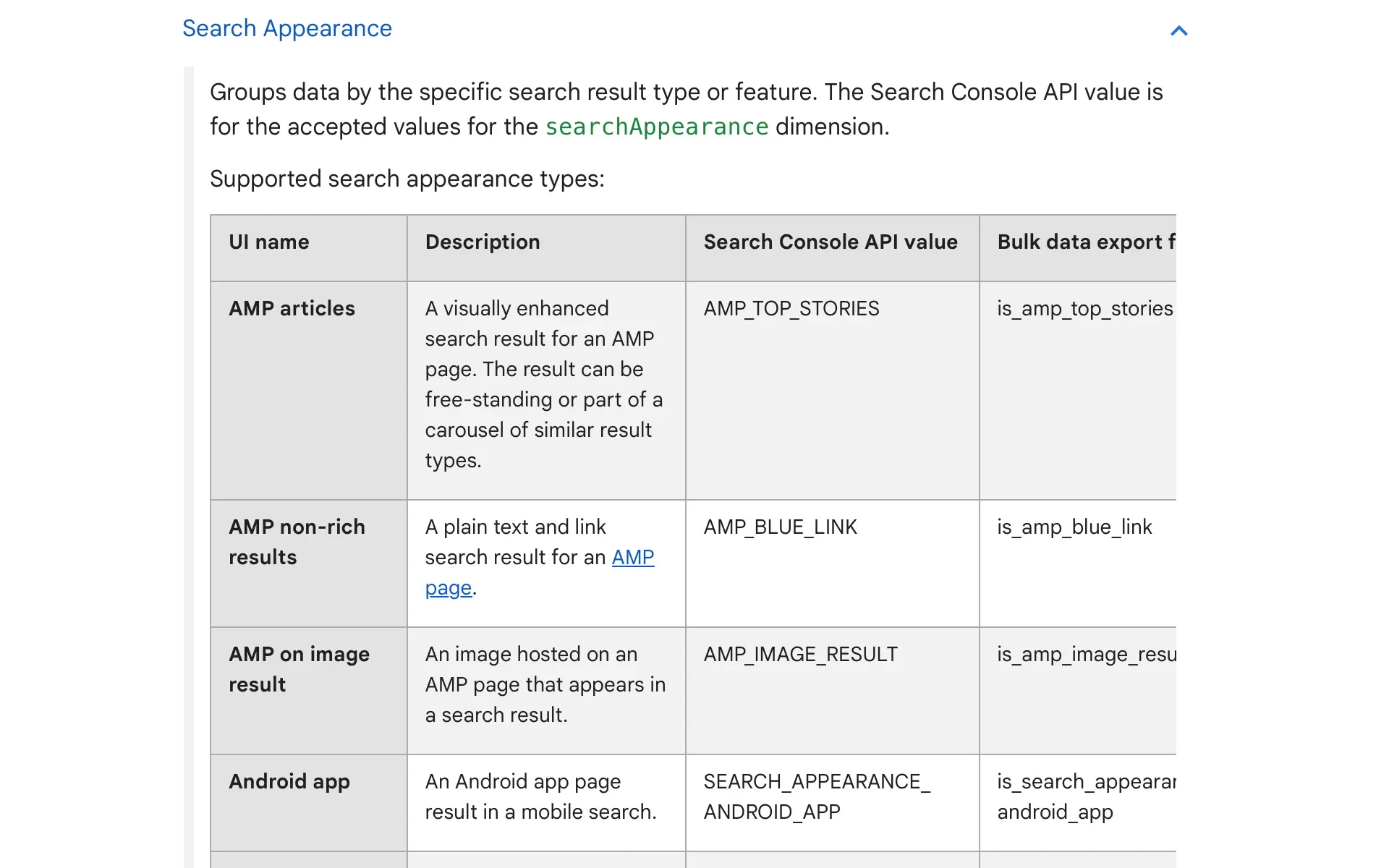Google updates Search Console Documentation on Supported Search Appearances
Google updates Search Console documentation with comprehensive table detailing supported search appearances, API values, and bulk export fields.

Google Search Central last week announced improvements to their documentation on Search Appearances supported in Search Console. This update, shared via the official Google Search Central Twitter account, aims to provide webmasters and SEO professionals with more comprehensive and accessible information about the various ways their content can appear in search results.
The enhanced documentation now features a detailed table that outlines all supported search appearances. Each entry in the table includes a short description of the appearance type, its corresponding Search Console API value, and the associated field name used in bulk data exports. This structured presentation of information is designed to help users better understand and utilize the data available through Search Console.
According to the announcement, the primary goal of this update is to enable users to extract more value from the data provided by Search Console. By clearly defining and categorizing the different search appearance types, Google aims to empower website owners and digital marketers to make more informed decisions based on how their content is displayed in search results.
The updated documentation covers a wide range of search appearance types, reflecting the diverse ways in which content can be presented in Google Search. Some of the notable categories included in the new table are:
- AMP (Accelerated Mobile Pages) related appearances, such as AMP articles, AMP non-rich results, and AMP on image results.
- Rich results for various content types, including FAQ, Q&A, recipes, and product listings.
- Specialized formats like Job listings, Learning videos, and Math solvers.
- Mobile-specific appearances like Android app results.
- Media-related appearances such as Video results and Media Actions.
Each search appearance type is accompanied by a clear description that explains its characteristics and how it manifests in search results. For instance, the documentation clarifies that "AMP articles" refer to visually enhanced search results for AMP pages, which can appear either as standalone results or as part of a carousel featuring similar content types.
The inclusion of API values for each search appearance type is particularly valuable for developers and those working with the Search Console API programmatically. This information allows for more precise data retrieval and analysis, enabling users to focus on specific appearance types that are most relevant to their goals.
Similarly, the addition of bulk data export field names facilitates easier integration with data analysis tools and platforms. This feature is especially useful for large-scale website owners and agencies managing multiple properties, as it streamlines the process of importing and processing Search Console data in bulk.
It's worth noting that the documentation also includes information on deprecated fields. These are search appearance types that are no longer actively supported but may still appear in historical data or legacy systems. Examples of deprecated fields include "Event details" and "Web Light results."
The updated documentation also provides insights into how search appearance data is aggregated and filtered within Search Console. For instance, it explains that dimensioning or filtering by search appearance will aggregate data by page rather than by property in the table view, while the graph view will continue to group data by property.
Additionally, the documentation addresses potential discrepancies in click data when filtering by search appearance. It clarifies that filtered click counts are assigned to URLs rather than specific feature types, which means that not all clicks for a given URL may correspond to the filtered feature type.
This update to the Search Console documentation comes at a time when search result presentation is increasingly diverse and complex. As Google continues to introduce new ways of displaying content in search results, understanding these various appearance types becomes crucial for website owners and SEO professionals seeking to optimize their online presence.
The announcement has garnered significant attention within the SEO community, with the tweet receiving over 36,400 views within hours of its posting. This level of engagement underscores the importance of Search Console data in the digital marketing landscape and the ongoing demand for clear, comprehensive documentation from Google.
In summary, the key facts of this announcement are:
- Google updated its Search Console documentation on supported search appearances on August 22, 2024.
- The update includes a new table detailing search appearance types, API values, and bulk export fields.
- The documentation covers a wide range of appearance types, from AMP articles to rich results and specialized formats.
- Deprecated fields are also included for reference.
- The update aims to help users extract more value from Search Console data.
- The announcement tweet received over 36,400 views, indicating high interest from the SEO community.

